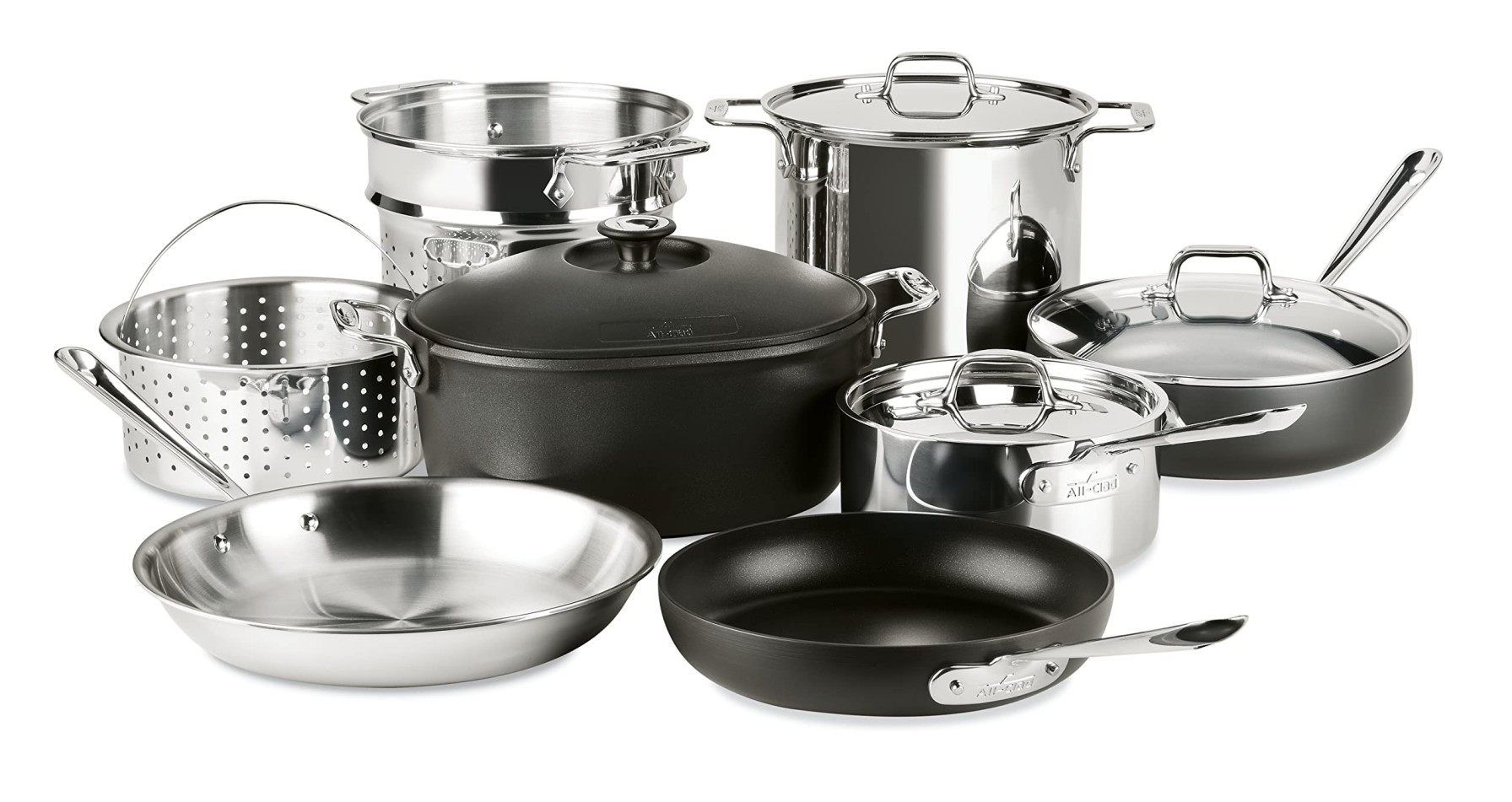Cooking is an art, and every artist needs the right tools. Whether you’re a beginner or a seasoned chef, the cookware you use plays a crucial role in the quality of your meals. With so many cookware sets available in the market, choosing the right one can be overwhelming. This guide will walk you through everything you need to know about cookware sets, from materials and types to maintenance and top recommendations.
What is a Cookware Set?
A cookware set is a collection of pots, pans, and other cooking utensils designed to help you prepare meals efficiently. These sets vary in size, material, and number of pieces, catering to different cooking styles and needs. A standard cookware set may include:
- Frying pans/skillets
- Saucepans
- Stockpots
- Sauté pans
- Lids
- Additional accessories like spatulas and steamers
Benefits of Buying a Cookware Set
Investing in a cookware set instead of buying individual pieces has several advantages:
- Cost-effective: Buying a set is often cheaper than purchasing items separately.
- Uniform Design: A matching set enhances the aesthetic appeal of your kitchen.
- Consistent Cooking Performance: Cookware sets from the same brand ensure uniform heat distribution and cooking efficiency.
- Convenience: A set usually includes all the essentials you need for cooking.
Types of Cookware Materials
One of the most important factors to consider when choosing a cookware set is the material. Each material has its own pros and cons in terms of durability, heat distribution, and maintenance.
1. Stainless Steel
Pros:
- Highly durable and resistant to rust and stains
- Even heat distribution (especially if it has an aluminum or copper core)
- Non-reactive, making it safe for cooking acidic foods
Cons:
- Can be prone to sticking if not properly seasoned or oiled
- Requires frequent polishing to maintain shine
2. Nonstick Cookware
Pros:
- Requires less oil, making it ideal for healthy cooking
- Easy to clean
- Great for beginners due to its nonstick properties
Cons:
- The nonstick coating can wear off over time
- Can be damaged by high heat and metal utensils
3. Cast Iron
Pros:
- Excellent heat retention and distribution
- Becomes naturally nonstick when properly seasoned
- Incredibly durable and can last generations
Cons:
- Requires regular maintenance and seasoning
- Heavy and not ideal for quick cooking
4. Copper
Pros:
- Superior heat conductivity for precise temperature control
- Aesthetic appeal
Cons:
- Expensive
- Requires frequent polishing to maintain appearance
- Can react with acidic foods if not lined with stainless steel
5. Aluminum
Pros:
- Lightweight and affordable
- Good heat conduction
Cons:
- Can react with acidic foods
- Prone to scratching and denting
6. Ceramic
Pros:
- Non-toxic and free from harmful chemicals like PFOA and PTFE
- Naturally nonstick
- Aesthetic appeal
Cons:
- Less durable than other materials
- Can chip or crack if dropped
Key Features to Consider When Buying a Cookware Set
Choosing the right cookware set depends on several factors:
1. Number of Pieces
Consider how many pieces you need based on your cooking habits. A basic set should include a frying pan, saucepan, and stockpot, while a more comprehensive set may include additional specialty pans.
2. Compatibility with Cooktops
Ensure the cookware is compatible with your stove type (gas, electric, induction, or ceramic). Induction stoves require magnetic-based cookware, such as stainless steel or cast iron.
3. Oven and Dishwasher Safety
If you plan to use your cookware in the oven, check its maximum temperature rating. Dishwasher-safe cookware also makes cleaning easier.
4. Handle Comfort and Safety
Look for cookware with ergonomic, heat-resistant handles that provide a comfortable grip.
5. Lids
Glass lids allow you to monitor food without lifting the cover, while metal lids are more durable.
Cookware Set Recommendations
Here are some of the top-rated cookware sets in different categories:
Best Stainless Steel Set:
All-Clad D3 Stainless Steel Cookware Set
- 3-ply bonded construction for even heating
- Dishwasher and oven safe
- Lifetime warranty
Best Nonstick Set:
T-fal Ultimate Hard Anodized Nonstick Cookware Set
- Scratch-resistant and toxin-free
- Thermo-spot indicator for proper preheating
- Dishwasher safe
Best Cast Iron Set:
Lodge Pre-Seasoned Cast Iron Set
- Heavy-duty and long-lasting
- Naturally nonstick with seasoning
- Great for all cooking surfaces, including campfires
Best Budget Set:
Rachael Ray Cucina Nonstick Cookware Set
- Affordable and stylish
- PFOA-free nonstick coating
- Oven safe up to 400°F
Best Induction-Compatible Set:
Cuisinart Multiclad Pro Stainless Steel Set
- Compatible with all stovetops, including induction
- Even heat distribution
- Oven and dishwasher safe
How to Maintain Your Cookware Set
Proper maintenance can extend the lifespan of your cookware.
General Tips:
- Always follow the manufacturer’s cleaning instructions.
- Avoid using metal utensils on nonstick surfaces.
- Dry cookware immediately after washing to prevent rust.
- Store cookware properly to avoid scratching.
Cleaning Specific Materials:
- Stainless Steel: Use a mixture of baking soda and water to remove stains.
- Nonstick: Hand wash with a soft sponge and mild detergent.
- Cast Iron: Never use soap; instead, clean with salt and re-season with oil.
- Copper: Use a mixture of lemon and salt for polishing.
Conclusion
A quality cookware set is a must-have for any kitchen. Whether you prefer stainless steel, nonstick, cast iron, or copper, choosing the right set depends on your cooking needs, budget, and maintenance preferences. Investing in the right cookware will enhance your cooking experience and ensure delicious meals for years to come.
